Navigating the world of Google Ads can sometimes feel like walking through a labyrinth. But trust me, once you understand the core principles and mechanisms, it becomes a powerful tool for reaching your target audience. A crucial element to grasp is bidding strategies. In this article, I’ll share with you my insights into various Google Ads bidding strategies, their use cases, and how to leverage them for your campaign’s success.
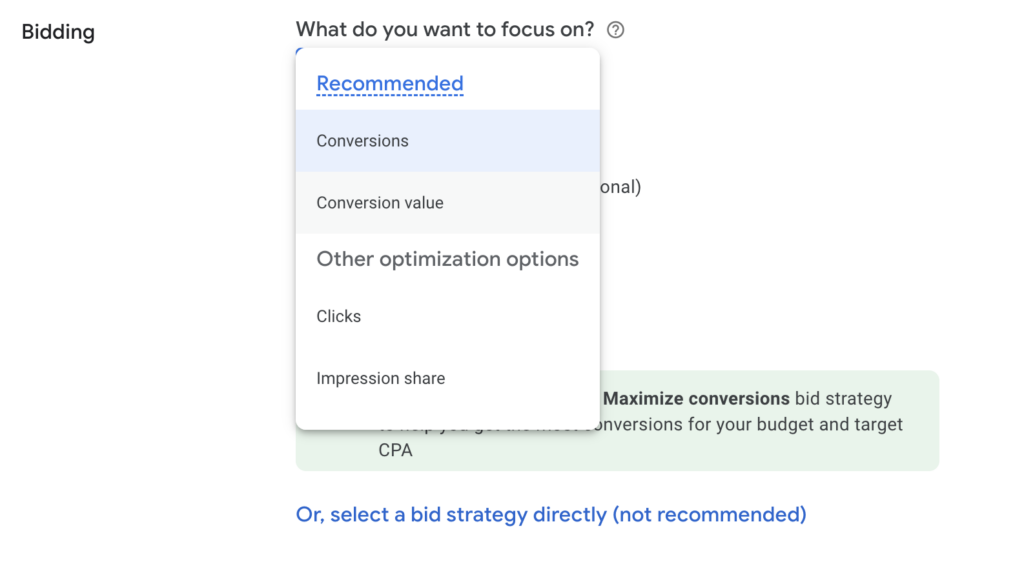
Understanding Bidding Strategies in Google Ads
In Google Ads, a bid represents how much you’re willing to pay for a specific action, like a click (CPC), impression (CPM), or conversion (CPA). The bidding strategy you choose tells Google how to use your bid in ad auctions. Your strategy can optimize your bids for clicks, impressions, conversions, or views.
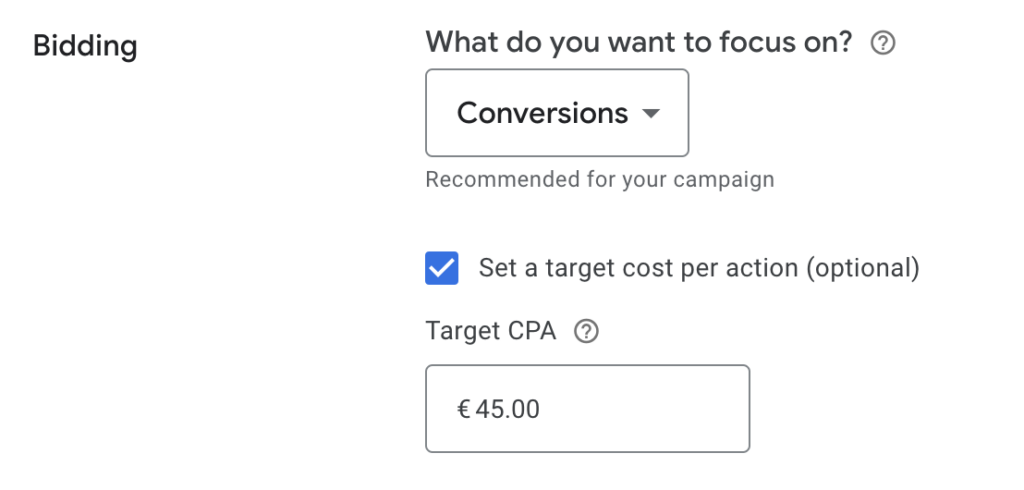
Choosing the Right Bidding Strategy for Your Campaigns
Google Ads provides an array of bidding strategies to suit different campaign objectives. Each one has its unique benefits and is tailored for specific campaign types and goals.
Here’s a brief rundown:
- Maximize Clicks: This automatic strategy aims to get as many clicks as possible within your budget. It’s excellent for increasing website traffic.
- Maximize Conversions: Ideal if you want to get more conversions while spending your budget. Google Ads uses historical information about your campaign and evaluates the contextual signals present at auction-time.
- Target CPA (Cost Per Acquisition): This strategy sets bids to get as many conversions as possible at your target cost-per-acquisition. Great for campaigns with a specific CPA goal.
- Target ROAS (Return On Advertising Spend): If you’re looking for a particular return on your ad spend, this strategy helps to get more conversion value or revenue at the target return-on-ad-spend you set.
- Target Impression Share: This strategy aims to show your ad on a percentage of eligible impressions, perfect for increasing brand awareness.
- Manual CPC Bidding: If you prefer to have control over your CPC bids, this strategy is for you. You can set different bids for each ad group in your campaign, or for individual keywords or placements.
- Enhanced CPC (ECPC): A semi-automated strategy, ECPC adjusts your manual bids to try to maximize conversions.
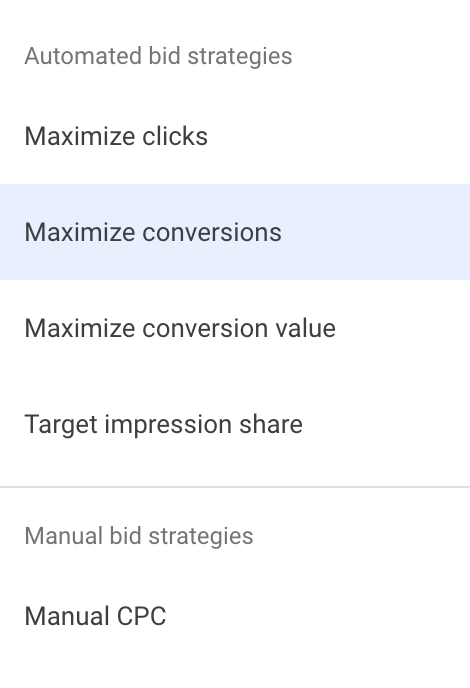
All Google Ads Bidding Strategies explained
Google Ads provides an array of bidding strategies to suit different campaign objectives. Each one has its unique benefits and is tailored for specific campaign types and goals.
Maximize Clicks
This is an automatic strategy that aims to get as many clicks as possible within your budget. If your primary campaign goal is to drive traffic to your website, this strategy can be a perfect fit. It’s particularly beneficial for blogs or informational websites where the main goal is readership rather than direct conversion.
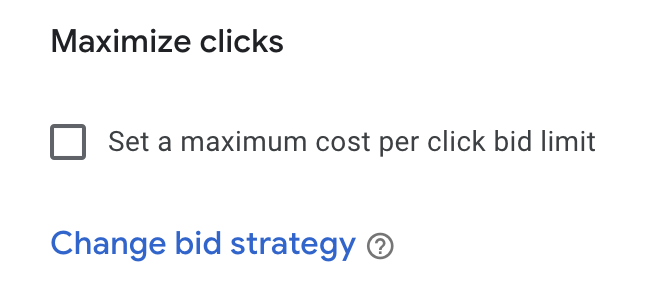
Maximize Conversions
If your campaign goal revolves around actions – like form fills, purchases, or sign-ups – this strategy can be the one for you. Maximize Conversions uses machine learning to automatically set bids at auction time to get the most conversions for your campaign while spending your budget.
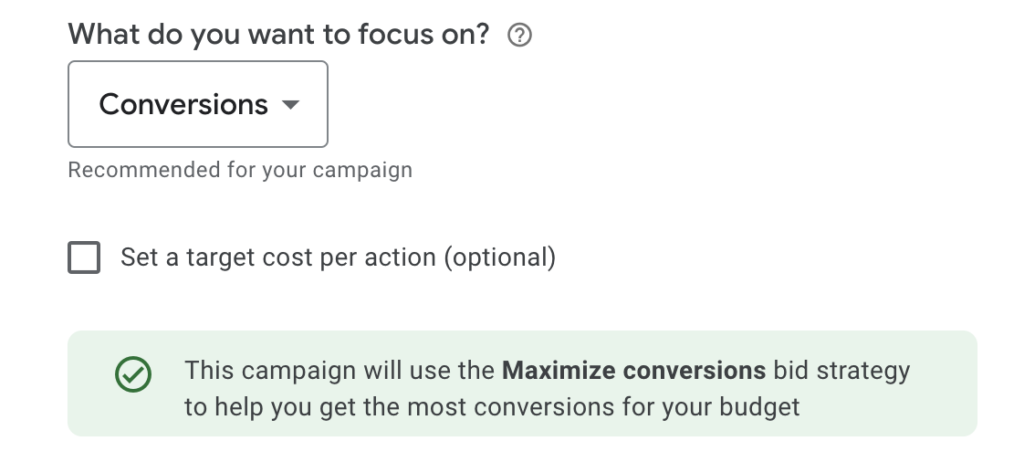
Target CPA (Cost Per Acquisition)
Target CPA bidding strategy sets bids to help get as many conversions as possible at the target cost-per-acquisition you set. This strategy is excellent for campaigns where a specific cost per conversion is the goal. It works best when you have historical conversion data, as Google uses this information to predict future conversions.
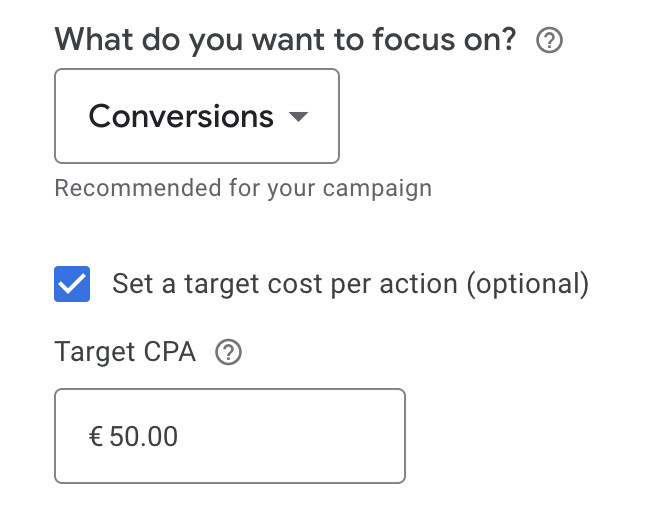
Target ROAS (Return On Advertising Spend)
When you want a particular return on your ad spend, the Target ROAS strategy comes in handy. It sets bids to help get as much conversion value as possible at the target return-on-ad-spend you set. This strategy is great for eCommerce campaigns where return on ad spend is the key metric.
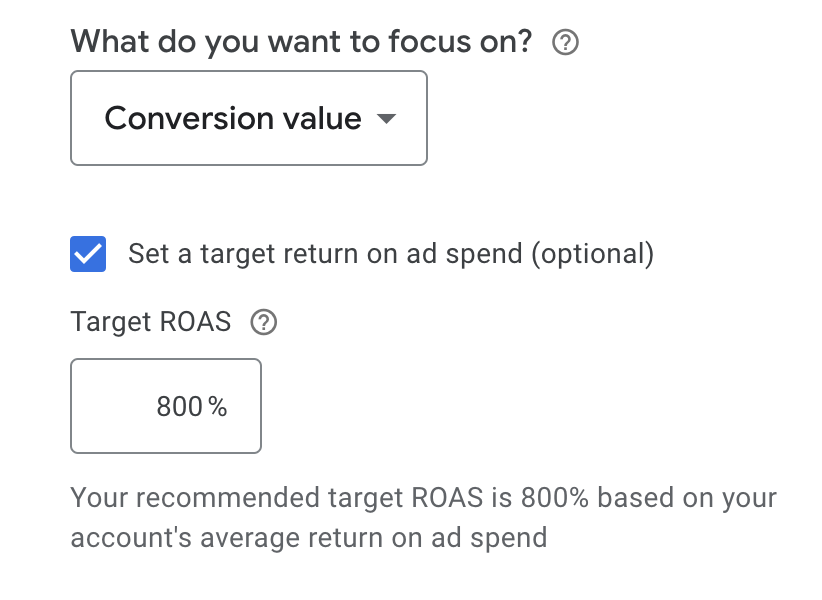
Target Impression Share
This strategy automatically sets bids with the goal of showing your ad on a percentage of eligible impressions. If you’re looking to maximize visibility and enhance brand awareness, especially in a competitive market, this strategy is worth considering.
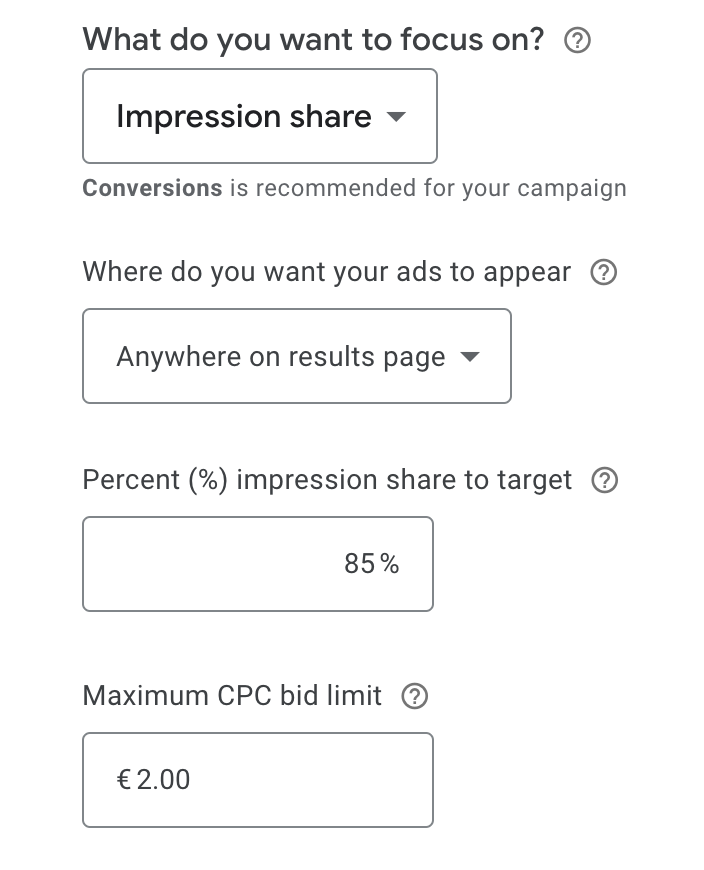
Manual CPC Bidding
For those who prefer having control over their CPC bids, Manual CPC Bidding can be the go-to strategy. With this, you can set different bids for each ad group in your campaign, or for individual keywords or placements. This strategy is well-suited to campaigns where you want to maintain tight control over how much you pay for each click.
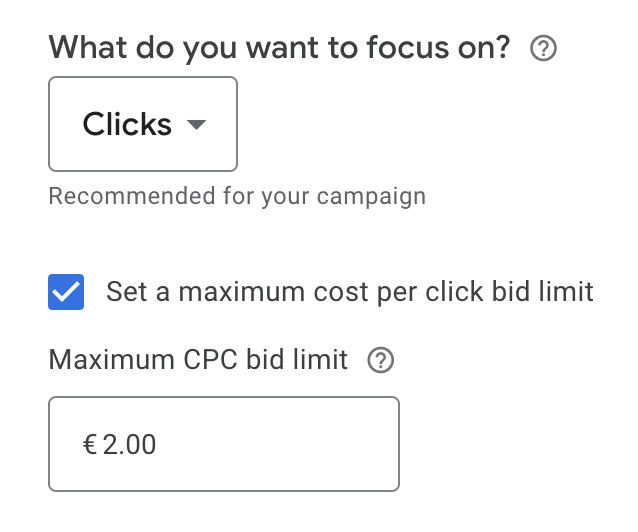
Enhanced CPC (ECPC)
A hybrid of manual bidding and automated bidding, ECPC adjusts your manual bids up or down depending on each click’s likelihood to result in a conversion. If you’re comfortable with manual bidding but want to leverage Google’s machine learning to optimize your bids, ECPC can be an effective strategy.
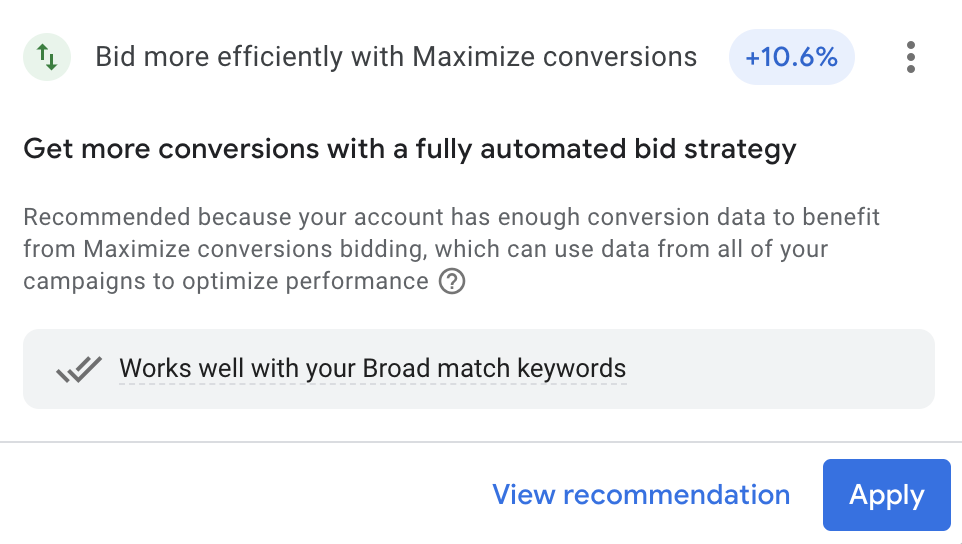
Key Tips for Leveraging Bidding Strategies in Google Ads
Selecting the right bidding strategy is only half the battle. Here are a few tips on how to optimize these strategies for your campaigns:
- Set Clear Campaign Objectives: Before choosing a bidding strategy, know what you want to achieve. Is it website traffic, conversions, brand visibility, or something else? Your objectives should guide your bidding strategy choice.
- Understand Your Customer’s Journey: Different strategies might be effective at different stages of the customer journey. For example, maximize clicks could be useful at the awareness stage, while target CPA might be more suitable for the decision stage.
- Regularly Monitor and Adjust Your Bids: Keep an eye on your campaign performance, and don’t hesitate to adjust your bids based on the results.
- A/B Test Different Bidding Strategies: Don’t be afraid to experiment with different strategies to find what works best for your campaigns.
- Leverage Automated Bidding: Google’s machine learning can help you optimize bids for specific goals, saving time, and potentially improving outcomes. But test this extensively!
Conclusion: Unleashing the Power of Google Ads Bidding Strategies
Understanding and effectively using bidding strategies can dramatically enhance your Google Ads campaigns. Whether your goal is to increase website traffic, drive conversions, or boost visibility, there’s a strategy tailored to your needs.
Remember, the road to Google Ads mastery is paved with continuous learning and testing. Keep analyzing your performance data, adjusting your strategies, and staying informed about the latest features and trends. That’s how we win in the digital marketing arena!
Frequently Asked Questions (FAQs)
- What bidding strategy should I start with? As a rule of thumb, I’d recommend starting with Manual CPC Bidding or Maximize Clicks for beginners. As you become more comfortable with Google Ads, you can start testing and implementing other strategies.
- Can I change my bidding strategy after the campaign has started? Yes, you can change your bidding strategy at any point in your Google Ads campaign. However, I advise allowing enough time to collect meaningful data before making any significant changes.
- What is Smart Bidding in Google Ads? Smart Bidding is a set of automated bid strategies that use machine learning to optimize for conversions or conversion value in each auction—a feature known as “auction-time bidding.”
- Can I set different bidding strategies for different ad groups? Yes, you can. This is particularly helpful if different ad groups have different objectives.
- Is there a perfect bidding strategy? Not really. The effectiveness of a bidding strategy is highly dependent on your campaign objectives, budget, industry, competition, and many other factors.
Additional Resources
Need further help with bidding strategies in Google Ads? Dive into more of my blog posts at conversionmaestro.com/google-ads. Remember, understanding your data and strategies is the key to success in digital marketing.

